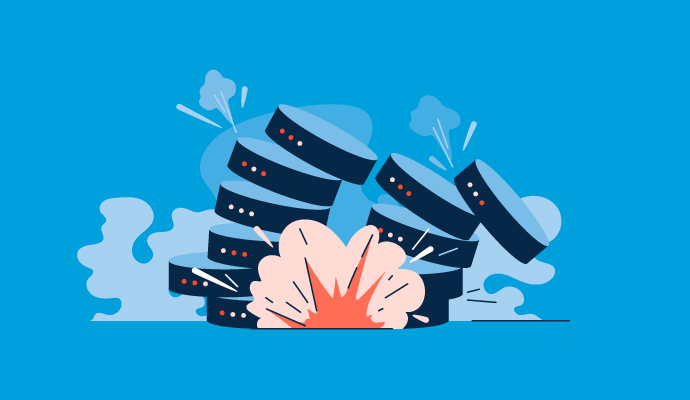Leading Tips for Ensuring Secure Data Destruction in Your Cyber Security Strategy
Leading Tips for Ensuring Secure Data Destruction in Your Cyber Security Strategy
Blog Article
The Importance of Effective Data Devastation Practices in Safeguarding Sensitive Details and Ensuring Computer System Security
In an era where information violations are increasingly typical, the value of reliable information damage practices can not be overstated. Executing durable data destruction approaches not only mitigates these dangers yet also lines up with legal compliance needs, making sure that organizations promote their online reputation and foster client count on.
Comprehending Data Destruction
Understanding data damage is critical in today's electronic landscape, where delicate info can easily be jeopardized. Reliable data damage entails not merely deleting data however making certain that data is irretrievable via comprehensive approaches. This procedure is necessary for organizations that handle personal customer info, intellectual home, or interior files, as any violation can lead to extreme monetary and reputational consequences.
Data devastation encompasses various strategies, consisting of shredding physical media, degaussing magnetic storage gadgets, and utilizing software-based solutions that overwrite data several times. Each approach serves a specific purpose and has to line up with the level of sensitivity of the details being disposed of. For instance, physical destruction is often chosen for disk drives containing very private data, while software techniques might be adequate for less sensitive info.
Additionally, sticking to sector standards and laws, such as the General Data Defense Regulation (GDPR) or the Health Insurance Coverage Mobility and Responsibility Act (HIPAA), is imperative for conformity and to alleviate legal threats. Organizations must create a robust data destruction policy, train workers on ideal practices, and on a regular basis examine their treatments to guarantee that all sensitive information is thrown away securely and successfully.
Risks of Inadequate Practices
Insufficient information devastation techniques subject organizations to considerable dangers that can have significant repercussions. When delicate info is not correctly thrown away, it stays susceptible to unauthorized gain access to, which can bring about data breaches and identity theft. Such events not only jeopardize the safety of individuals however likewise tarnish the company's reputation, resulting in a loss of client count on and possible economic repercussions.
Furthermore, regulatory compliance is significantly rigid in many sectors. Failing to follow information damage laws can result in hefty penalties and legal actions against companies. These penalties can stress funds and divert attention from core organization operations.
Additionally, the abuse of residual information can result in intellectual property burglary or business espionage, endangering affordable benefits (data destruction). The influence of poor information devastation extends past instant financial losses; it can also lead to lasting damage to brand stability and market setting

Organizations should identify that information safety and security is not only concerning preventing violations; it additionally includes the liable management of data throughout its lifecycle. Overlooking effective information devastation protocols can have tragic effects, emphasizing the need for robust measures to mitigate these threats.
Finest Practices for Information Destruction
Applying reliable information destruction methods is important for safeguarding sensitive info and keeping compliance with governing requirements. Organizations ought to take on a multi-faceted approach to make certain that information is irretrievable, consequently avoiding unapproved accessibility and possible violations.
First, data need to be classified based upon level of sensitivity, enabling companies to use appropriate damage approaches tailored to the level of danger. For electronic information, utilizing software-based data-wiping tools that comply with sector standards can effectively overwrite existing information. Physical destruction techniques, such as shredding or degaussing, are crucial for gadgets that keep delicate information, making sure total eradication.
Establishing a clear information retention policy is important, describing the length of time various kinds of details need to be retained before devastation. Regular audits of data storage space systems are also required to recognize out-of-date or unneeded data requiring elimination.
Additionally, training staff members on the relevance of data destruction and the particular procedures to comply read more with fosters a society of safety within the company. Lastly, keeping documents of information destruction processes offers accountability and sustains conformity with outside regulations and internal plans. By sticking to these finest techniques, organizations can considerably alleviate the dangers linked with data exposure.
Legal and Conformity Considerations

Failure to adhere to these policies can result in serious penalties, including significant penalties and reputational damages. Organizations must carry out a durable information destruction policy that aligns with these lawful frameworks and gives clear guidelines on the proper techniques of data disposal, whether physical shredding or digital cleaning.
In addition, preserving paperwork of information devastation tasks is crucial for showing conformity during audits or evaluations. By focusing on lawful and conformity considerations, organizations can improve their information protection pose and foster depend on with stakeholders and customers, eventually contributing to a more secure information administration environment.
Advantages of Effective Data Devastation
Effective information damage methods prolong beyond plain compliance; they offer considerable benefits to companies that prioritize them. By guaranteeing that delicate information is irretrievably damaged, companies reduce the threat of data violations and the possible economic consequences connected with them. This aggressive method not just safeguards versus unauthorized gain access to but likewise improves the overall trustworthiness of the organization in the eyes of stakeholders and clients.
Applying durable information damage techniques, such as physical destruction of storage tools or sophisticated data cleaning methods, adds to the conditioning of a company's cybersecurity posture. data destruction. It decreases the probability of copyright theft and protects exclusive information, consequently maintaining a competitive edge in the marketplace

Verdict
In conclusion, effective information destruction practices are important for safeguarding delicate info and improving total computer system safety and security. Ultimately, a commitment to durable data destruction techniques cultivates a society of obligation, thereby strengthening an organization's cybersecurity stance and keeping customer trust.

Report this page